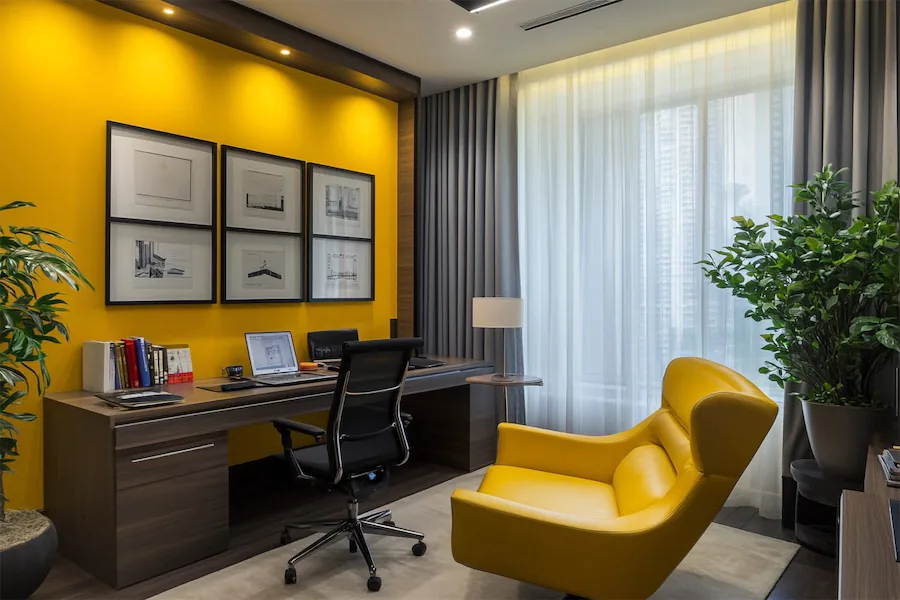An Art Moderne office room embodies the streamlined elegance of the Art Moderne movement, characterized by sleek lines, geometric forms, and a minimalist aesthetic.
Introduction to Art Moderne Office Rooms
Art Moderne, also known as Streamline Moderne, emerged in the 1930s as a response to the more ornate Art Deco style. It emphasizes curving forms, long horizontal lines, and sometimes nautical elements, reflecting the era’s fascination with speed and technology. In an office setting, this translates to a workspace that is both functional and stylish, promoting efficiency and a sense of modernity.
History and Origins of Art Moderne Office Rooms
The Art Moderne movement originated during the Great Depression, influencing architecture, industrial design, and interior spaces. It sought to convey a sense of progress and optimism through streamlined designs and the use of new materials. Incorporating Art Moderne elements into office spaces became a way to project a forward-thinking and dynamic corporate image.
Key Features of Art Moderne Office Rooms
- Streamlined Furniture: Incorporation of furniture with smooth, curved lines and minimal ornamentation, often made from materials like chrome and glass.
- Geometric Forms: Use of geometric shapes in furnishings and decor to create a cohesive and modern aesthetic.
- Monochromatic Color Schemes: Employment of neutral color palettes, such as whites, grays, and blacks, occasionally accented with bold colors, to maintain a sleek appearance.
- Reflective Surfaces: Inclusion of glossy finishes, mirrors, and glass elements to enhance light and create a sense of openness.
- Built-in Lighting: Integration of lighting fixtures into the architecture to provide ample illumination without disrupting the streamlined design.
Applications of Art Moderne Office Rooms
- Corporate Offices: Designing workspaces that reflect a commitment to modernity and efficiency, suitable for industries focused on innovation.
- Creative Studios: Establishing environments that inspire creativity through sleek and uncluttered design elements.
- Home Offices: Creating a minimalist and functional workspace within a residential setting that echoes the elegance of the Art Moderne style.
Considerations When Designing an Art Moderne Office Room
- Material Selection: Choose materials that reflect the era, such as chrome, glass, and lacquered wood, to maintain authenticity.
- Functional Layout: Ensure the office layout promotes efficiency and workflow, aligning with the practical nature of Art Moderne design.
- Lighting: Incorporate both natural and artificial lighting to highlight the clean lines and reflective surfaces characteristic of the style.
Conclusion
An Art Moderne office room offers a harmonious blend of functionality and streamlined elegance, creating a workspace that is both inspiring and efficient. By thoughtfully integrating key features such as streamlined furniture, geometric forms, and reflective surfaces, one can design an environment that reflects the timeless appeal of the Art Moderne movement.
